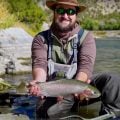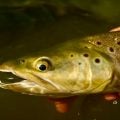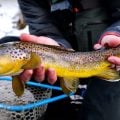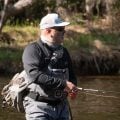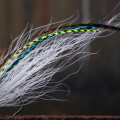5 Must-Have Salmonfly Patterns
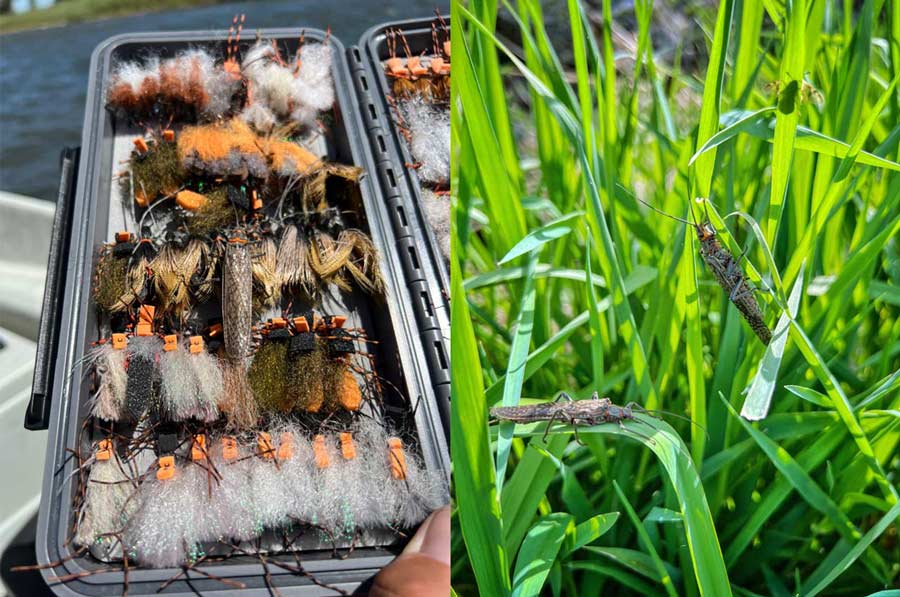
The salmonfly hatch is usually short-lived, so it pays to have the right patterns in your box when the magic happens. Photos: Mike Pagoda
Few things fire up Western trout—and anglers—like the arrival of the BIG bugs: salmonflies (Pteronarcys californica). The hatch is brief and fleeting, but when you hit it just right—before the fish have gorged themselves—it’s pure magic. According to some sources, a significant portion of a trout’s annual caloric intake comes from this hatch alone. Watching large, clumsy salmonflies flutter and flop across the surface, only to be slowly engulfed by opportunistic trout, is the stuff dreams are made of. If you’re lucky enough to time it right, you can chase this hatch from late April or early May in the far West—on rivers like the Deschutes—through its peak on the Colorado River in late May, and all the way to the famed Madison in late June and early July.
The Southwestern Colorado hatch around the Fourth of July is the best I’ve ever seen. It’s a rare chance to throw big bugs to big fish and witness some of the most visual eats fly fishing has to offer. But to make the most of this special window, you need to come prepared with the right flies. Here are five adult salmonfly patterns I rely on to capitalize on the chaos.
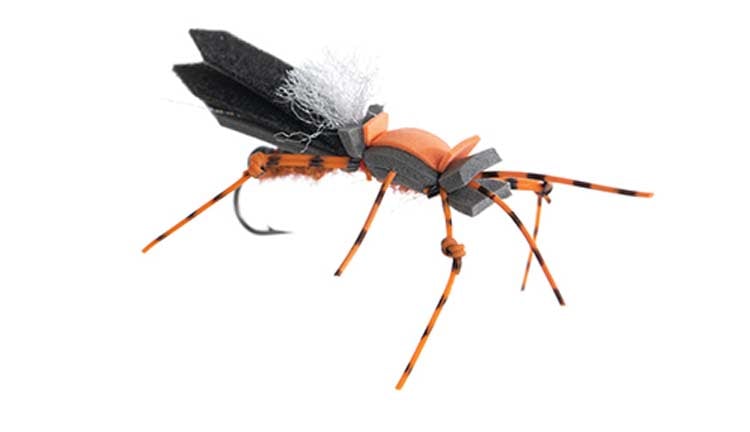
Grillos’ Dancin’ Ricky
Andrew Grillos—who, as my good buddy Ivan Orsic puts it, is the “President of the Good Dudes Society”—is also renowned for tying what many refer to as guide flies. These are patterns that prioritize durability and effectiveness, designed so fishing guides can keep clients on fish without constantly retying or restocking. The Dancin’ Ricky fits that bill perfectly. Built to take a beating and keep fishing, it’s a standout salmonfly pattern thanks to its high mobility. The double-stacked foam, synthetic wings, and generous rubber legs give it a ton of movement on the water. According to Andrew, this fly was inspired by the inebriated dance moves of a college buddy, and when a big stonefly crashes onto the water’s surface, its clumsy, chaotic flailing isn’t far off from a drunken cha-cha.
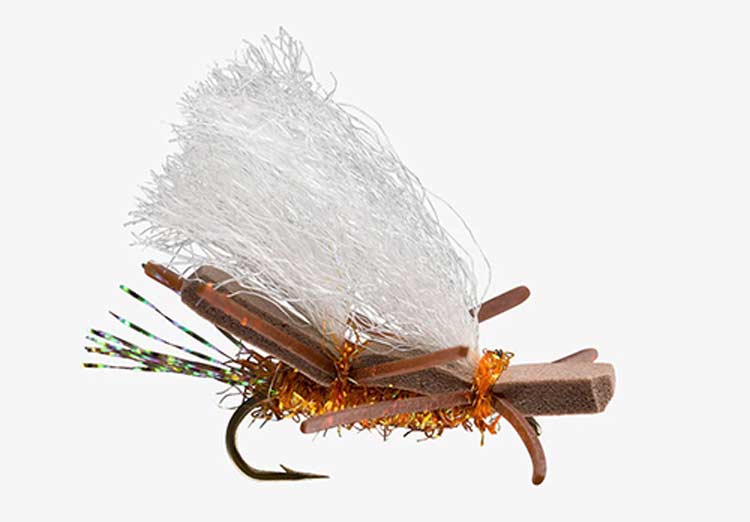
Chubby Chernobyl Pteronarcys
My first go with Pteronarcys californica came during an industry event in southern Colorado called “What the Schuck!?,” where a gaggle of Western fly shop owners and buyers gathered in Creede, Colorado, for a mix of product training and, of course, fishing. Idylwilde Flies, the now-defunct boutique fly supplier out of Portland, was a key sponsor, and their fly guru, Patrick Kilby, was on hand to share the latest and greatest patterns. The standout hit of the event was a massive orange Chubby Chernobyl that absolutely cleaned up on our afternoon floats. Fast forward a few years, and Patrick is now leading the charge at RIO’s fly division, making sure anglers still have access to unique, high-quality patterns, including a dialed-in Pteronarcys version of the Chubby that’s tailor-made for the salmonfly hatch. The Chubby’s biggest asset is its extreme buoyancy. It floats like a cork, even when twitched, skated, or trailing a heavy dropper. That makes it ideal for riffles, bankside buckets, and faster seams and currents. A dry-dropper setup featuring a Chubby and Pat’s Rubber Legs is a killer combo for this hatch. For systems with darker and more mottled salmonflies, the Royal and Black versions can also be strong choices.
*Salmonfly Pro Tip: Carry a Sharpie. In many rivers, salmonflies are mottled and show only faint hints of orange. If your fly looks too clean or too bright, a quick hit with a brown or black Sharpie can help dull the foam and better match the naturals fluttering around.

Gould’s Half-Down
Predators are always looking for an easy meal, and trout are no exception. Gould’s Half-Down takes full advantage of this instinct, mimicking a struggling or crippled adult salmonfly caught in the surface film. Its semi-submerged profile suggests a bug that’s either injured or failing to get airborne, making it an irresistible target for opportunistic fish. While salmonflies aren’t exactly hard to spot, the Half-Down’s oversize parachute post makes it incredibly easy to track, especially in broken light or shaded water. The parachute also helps ensure that the fly lands upright every time. A splayed deer-hair wing keeps the fly level in the film, giving it a realistic posture that holds up in slow seams, eddies, and along the edges of riffles where opportunistic trout often sit waiting for a bug in trouble.
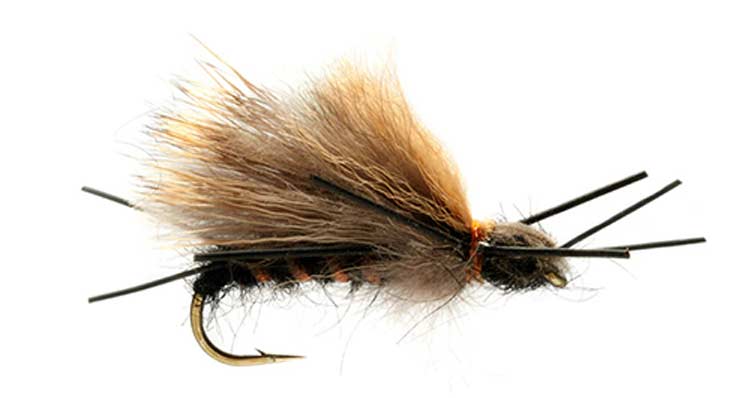
Libby’s Salmonfly
From the vise and mind of Cheech at Fly Fish Food—one of the most creative and fishy tiers out there—Libby’s Salmonfly started with a challenge from a buddy: build a legit salmonfly that doesn’t rely on foam. Named after that buddy’s daughter, this pattern ditches the bright-orange, overbuilt look and goes for something far more natural. Tied with CDC and darker dubbing blends—think mottled olive and dusty black instead of neon—it mirrors the real thing with long tails, a fat thorax, low-profile wing, and a ton of movement. Despite having no foam, it floats high thanks to stacked CDC, and it’s surprisingly durable for a feather-based fly. Later in the hatch, when the fish get a bit more picky, this pattern can stand apart from everything else the trout have been offered.
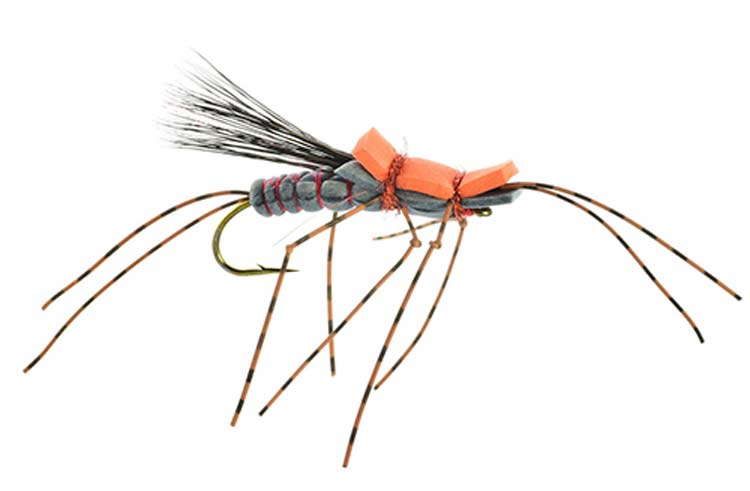
Grillos’ 64 Impala
In classic Andrew Grillos fashion, this pattern is named after a lowrider, and somehow, it fishes exactly like one. The 64 Impala is built for the tail end of the hatch, when trout have been gorging for days and start looking a little bloated and lazy. It rides low in the film, more flush than flash, and gives off that spent-adult vibe that can fool sleepy fish that are no longer willing to chase twitchy, high-floating bugs. There’s just enough foam to keep it from sinking, but not so much that it looks unnatural. It’s subtle, slick, and rides smooth—just like its namesake car cruising slowly down the block.
Whether you’re chasing the hatch across the West or luck into it on your home water, having the right bugs in your box makes all the difference. These five patterns have earned a spot in my box, not because they look cool in the bin, but because they hold up, fish well, and get eaten. Tie a few, stash a Sharpie in your pack, and be ready when the chaos begins.
